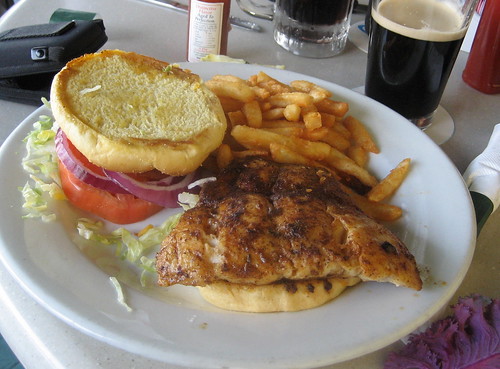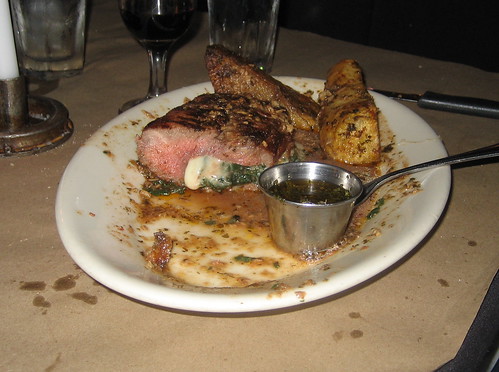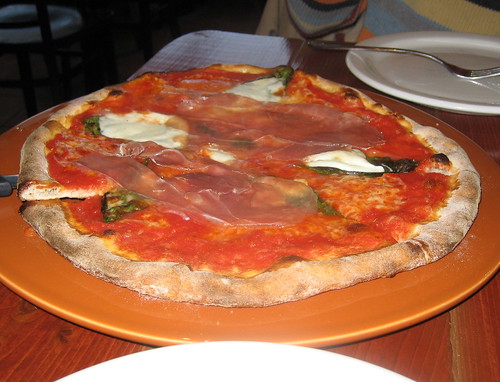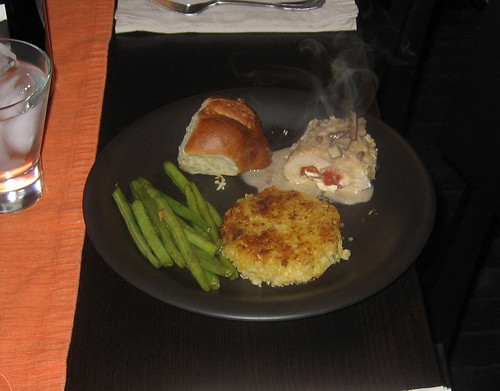Before this book, I’ve always had a tainted view of Ben Franklin because of the existence of those Ben Franklin stores. I could never figure them out. Were they supposed to be like a Walgreens, a Wal-Mart, or a Dollar General? Or are they a combination of all three? Well, here is what the Ben Franklin website says about it. Nonetheless, if the store reflected the man, a Ben Franklin store would be more like a Marshall Fields…famous, unpretentious, and dead. No seriously, this was an excellent book and I’m happy that I have a deeper understanding of the man.
He was born in 1706 of humble means in Boston but became famous in Philadelphia. By the time he retired at age 42, he was one of the wealthiest men in America and on his way to becoming a world famous inventor, writer, philosopher, and politician. He died in 1790 and his death was mourned far more by France than the United States. This book walks the reader through Franklin’s life and relates his successes and failures to the tumultuous times of the New World and Early America. I’m going to organize my description in the same way the author organized the chapters. I’m doing so because I think a major strength of this book is the way Wood defines the sections of Franklin’s life in a coherent, easy-to-understand method.
Becoming a Gentleman (1706-1756)
In the early 1700s, you were either a gentleman or a commoner, there was no middle ground. That is, until Ben Franklin turned this situation upside down. Wood says about Franklin:
In effect, he began acquiring some of the attributes of a gentleman while still remaining one of the common working people. In 1727 he organized a group of artisans who met weekly for learned conversation – a printer, several clerks, a glazier, two surveyors, a shoemaker, a cabinetmaker, and subsequently “a young Gentleman of some Fortune,” named Robert Grace, who did not have to work for a living……It was this kind of aspiring and prosperous middling man that was beginning to challenge the hierarchical network of privilege and patronage that dominated eighteenth-century society, and in the process blurring the traditionally sharp social division between gentleman and commoners.
He was so successful in his printing business that he accumulated substantial wealth by his retirement in 1948. However, he did not become a full-fledged “gentleman” until about a decade later after spending many years “organizing clubs, starting libraries, promoting schools, leading the Masons, and becoming involved in dozens of activities that were well beyond the reach and consciousness of nearly all tradesman and artisans.”
Becoming a British Imperialist (1757-1764)
The start of this stage in his life found Franklin consumed with electricity. This interest manifested itself in a book about electricity that was published in America and Europe and solidified his fame worldwide. By the end of this stage he was on a mission to align the interests of America and Great Britain. He loved London and believed that America and Great Britain could coexist and even thrive. Wood quotes Franklin and says that Franklin desired that
…the people of Great Britain and the people of the colonies “learn to consider themselves, not as belonging to different Communities with different Interests, but to one Community with one Interest.”
Wood does not sugarcoat the life of Franklin. It was during this period that Franklin acquired slaves and grew more distant from his wife Deborah. In 1764 he left for an extended stay in London and never saw his wife again, and he didn’t seem to care much about that.
Becoming a Patriot (1765-1774)
Franklin spent about a decade in London trying to get Great Britain and the colonies to get along. By this time, Great Britain was well into the mode of taxation without representation. He brawled with Parliament about the Stamp Act, a tax basically on “nearly every form of paper used in the colonies.” In front of Parliament “he made it clear as possible that Parliament had no right to lay a stamp tax on the colonists, and his pointed responses probably saved his reputation in America.”
Try as he might, through nasty politics on both sides of the ocean, conciliation between Great Britain and the colonies was not meant to be. Franklin eventually started to feel disfavor towards Great Britain and when he sailed for America in early 1775, he was described as “a passionate patriot, more passionate in fact than nearly all the other [American] patriot leaders.”
Becoming a Diplomat (1775-1784)
When Franklin got back to America the fighting had already started. Franklin’s main role in the Revolutionary War was to “seek foreign support for the war.” He went to France, achieved several diplomatic successes, and fell in love with the country (a feeling felt mutually by the French towards Franklin). Wood says,
Not only did Franklin hold the Franco-American alliance together, but he also oversaw the initial stages of the successful peace negotiations with Britain. And he did this all with a multitude of demands placed on him.
This, by a man in his 70s, in a time when people did not live as long as they do now. Wood concludes this section by making a big proclamation,
If Washington was indispensable to the success of the Revolution in America, Franklin was indispensable to the success of the Revolution abroad.
Becoming an American (1785-1790)
As Franklin’s life winds down, Wood brings the book to a rousing conclusion. Immediately before his death, Franklin made an effort to abolish slavery. It was rejected by America but Wood attributes the eventual abolishment of it partly to Franklin.
Virginia and the South always claimed that they had remained closer to the eighteenth-century beginnings of the nation, and they were right. It was the North that had changed and changed dramatically. Because northern Americans came to celebrate work so emphatically – with Franklin as their most representative figure – the leisured slaveholding aristocracy of Virginia and the rest of the South became a bewildered and beleaguered minority out of touch with the enterprise and egalitarianism that had come to dominate the country. As long as work had been held in contempt, as it had for millennia, slavery could never have been wholeheartedly condemned. But to a society that came to honor work as fully as the North did, a leisured aristocracy and the institution of slavery that supported it had to become abominations.
Wow, that is quite a tribute to Franklin. I am going to have to toss it around a little before I buy off on it though.
Great book.




